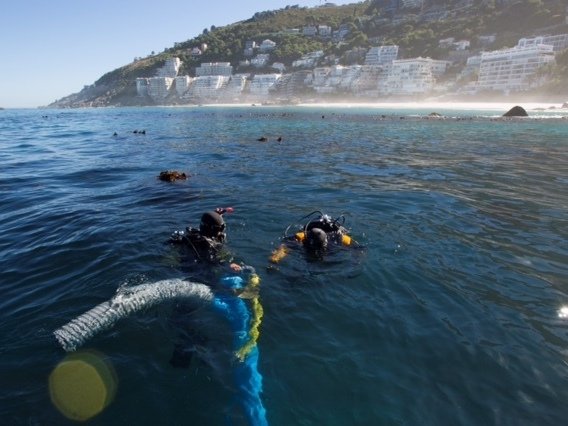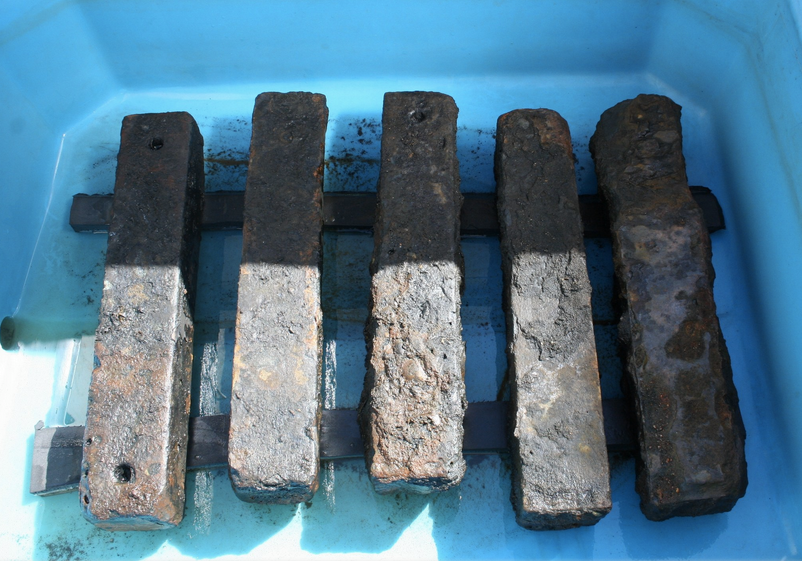
Discovery of Sunken Slave Ship off Cape Town
Well over 300 years ago, a slave ship on its way from Mozambique to Brazil crashed on to reefs in stormy seas off of Cape Town. Half of the 400 or more slaves were lost. The ship was the Sao José Paquete Africa. In Cape Town tomorrow (Tuesday 2 June 2015), the Smithsonian’s National Museum of […]

Well over 300 years ago, a slave ship on its way from Mozambique to Brazil crashed on to reefs in stormy seas off of Cape Town. Half of the 400 or more slaves were lost. The ship was the Sao José Paquete Africa.

In Cape Town tomorrow (Tuesday 2 June 2015), the Smithsonian’s National Museum of African-American History and Culture, along with the Iziko Museums of South Africa, the Slave Wrecks Project, and other partners, will announce that the remnants of the São José have been found, right where the ship went down, off of Camps Bay.
Researchers involved in the project say it is the first time that the wreckage of a slaving ship that went down with slaves aboard has been recovered.
A story in The New York Times catalogues the investigation that took years and many detours to link the ship to Portugal, a lone slave called ‘Black Man’ on Mozambique Island and a horde of iron blocks that were used as ballast and found off of Cape Town to tie it all together.

Discovering the ship and its history took the incredible work of divers from South Africa, the United States, as well as museum curators from Africa, Europe and the Americas, who went through old ship manifests trying to find details of the ship. In 2010, a George Washington University anthropologist heard from Jaco Boshoff, a maritime archaeologist with the Iziko Museum in Cape Town, that a shipwreck off the coast thought to be a Dutch merchant ship might be something else. Treasure hunters diving near Camps Bay had identified the ship as the Schuylenburg, which had sunk in 1756.
But Boshoff was coming to another conclusion. Pieces emerged pointing to a different ship altogether. In the wreck they found copper fastenings and copper sheathing, which had not come into common use on ships until later in the 18th century. Boshoff began to dig into archival records, particularly those relating to the Dutch East India Company from 1652 to 1795.
In 2011, as he was pouring through the Western Cape Archives Repository that is part of the South African National Archives network, Boshoff found a record from the inquest of the captain of the São José, describing what happened on Dec. 27, 1794, when the ship went down.
The document, which is in Portuguese and paraphrases the inquest testimony of Capt. Manuel João, tells how the ship had hugged the shoreline to protect itself from strong winds, but was so close to land that it crashed into rocks and became stuck on two reefs in turbulent surf. It began to come apart right where the treasure hunters had found what they believed to be the Schuylenburg.
More than 200 slaves were transported to land because slaves were valuable, and the captain didn’t want to lose them, but an equal number were tragically lost. Those who made it to shore, as the Times so chillingly puts it, “were sold again.”
On Tuesday there will be a memorial service near the site where the ship went down. Divers will place soil from Mozambique Island on the underwater site to memorialise the graves of the 212 drowned slaves.
Watch #SlaveWrecks Video
Watch this video to hear the story of the São José #slavewreck and see underwater dive footage.
Stay tuned this week for a special announcement about the #SlaveWrecks Project. The Smithsonian National Museum of African American History and Culture worked in collaboration with Iziko Museums of South Africa, The George Washington University, South African Heritage Resource Agency, US National Park Service – Submerged Resource Center, Diving With A Purpose, and African Center for Heritage Activities (ACHA). Watch this video to hear the story of the São José slave wreck and see underwater dive footage. You will hear firsthand from many partners of the #SlaveWrecks Project.
Posted by Smithsonian National Museum of African American History and Culture on Monday, June 1, 2015